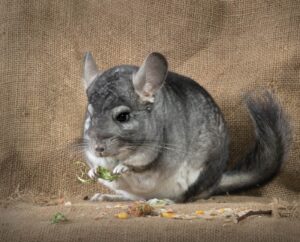Table of Contents
ToggleIntroduction
The enigmatic and adaptable creatures known as gray foxes (Urocyon cinereoargenteus) captivate with their unique characteristics and intriguing behaviors. Foxes Gray? These small to medium-sized mammals, native to North America, boast a distinctive coat of fur that ranges from a grizzled gray to rusty red, setting them apart from their red fox counterparts. Gray foxes are renowned for their intelligence and resourcefulness. Making them fascinating subjects of study for wildlife enthusiasts and scientists alike. In this exploration, we delve into the world of gray foxes, unraveling the mysteries of their lives, habits, and the vital role they play in the ecosystems they inhabit.
Physical Characteristics Of Gray Foxes
Description of Their Grizzled Gray to Rusty Red Fur
The gray fox, scientifically known as Urocyon cinereoargenteus, boasts a distinctive and captivating fur coat that sets it apart from its red fox relatives. The pelage of the gray fox is characterized by a grizzled mix of gray and rusty red hues. Creating a visually striking and unique appearance. This coloration not only provides excellent camouflage in a variety of environments. Including woodlands and grasslands, but also contributes to the fox’s overall charm.
The individual hairs of their fur are banded with different shades, creating a grizzled or salt-and-pepper effect. This adaptive coloration aids the gray fox in blending seamlessly with the diverse landscapes it inhabits. Moreover, their fur can change with the seasons, offering enhanced camouflage during winter months. With a grayer tone that transitions to a more reddish hue in the warmer seasons.
Size and Weight Variations
Gray foxes exhibit considerable size and weight variations, with adult individuals typically ranging from small to medium sizes. On average, their body length varies between 21 to 29 inches, while their tails add an additional 11 to 16 inches. The weight of these foxes generally falls within the range of 7 to 13 pounds. Though there can be regional and individual differences.
Sexual dimorphism is evident, with males usually being slightly larger than females. The size and weight variations of gray foxes reflect their adaptability to diverse habitats. Allowing them to navigate through different terrains with agility and efficiency.
Notable Features Like Large Ears and Bushy Tail
Gray foxes are charming and functional. They have distinctive features. Their ears are large and pointed. They are the largest in the fox family. These prominent ears not only enhance their sense of hearing, crucial for detecting prey and potential threats, but also add to their visual allure.
Behavior And Social Structure Of Gray Foxes
Nocturnal Habits
Gray foxes, Urocyon cinereoargenteus, are primarily nocturnal creatures, meaning they are most active during the night. This behavioral adaptation allows them to avoid the intense daytime heat and potential predators while taking advantage of their keen senses in low-light conditions. Their nocturnal lifestyle also aligns with their hunting habits. As they stealthily move through their habitats in search of prey under the cover of darkness.
The nighttime activity of gray foxes is marked by increased energy expenditure for hunting, exploring, and engaging in social interactions. While they are predominantly nocturnal, there are instances where they may exhibit crepuscular behavior. Being active during the dawn and dusk periods.
Solitary or Family-Oriented Behavior
Gray foxes display a flexible social structure that can vary based on factors such as territory, resource availability, and breeding season. While they are generally considered solitary animals, there are instances where they exhibit family-oriented behavior. During the breeding season, a mated pair may form a monogamous bond and raise their offspring together. Family groups typically consist of parents and their kits.
Outside of the breeding season, adult gray foxes tend to maintain individual territories, marking them with scent markings to communicate their presence to other foxes. These territories help regulate population density and access to resources.
Communication Methods
Communication is vital for gray foxes, serving various purposes such as maintaining social bonds, signaling territory boundaries, and coordinating mating activities. Gray foxes employ a range of vocalizations, body language, and scent marking to convey messages to each other. Some common communication methods include:
Vocalizations: Gray foxes produce a diverse array of sounds, including barks, yips, screams, and howls. These vocalizations are used for signaling alarm, expressing aggression, or during mating rituals.
Body Language: Physical cues, such as postures and movements, play a crucial role in fox communication. Dominant or submissive behaviors are conveyed through body language, helping to establish hierarchy and avoid confrontations.
Scent Marking: Gray foxes use scent glands located on their paws and around their anal region to mark territories. This scent marking not only communicates their presence but also conveys information about reproductive status and identity.
Diet And Hunting Habits Of Gray Foxes
Omnivorous Nature
Gray foxes, members of the Canidae family, are known for their highly adaptable and omnivorous diet. Their eating habits are diverse and vary according to seasonal availability and geographical location. While they primarily rely on a carnivorous diet, consisting of small mammals, birds, insects, and reptiles, they are also opportunistic omnivores, incorporating fruits, berries, and plant matter into their meals.
This omnivorous nature allows gray foxes to thrive in a wide range of habitats, from dense forests to urban areas, where they can exploit various food sources. The ability to switch between animal and plant-based foods enhances their chances of survival and success in different ecosystems.
Prey Selection and Hunting Techniques
Gray foxes employ a combination of stealth, agility, and keen senses in their hunting techniques. Their primary prey includes small mammals such as rodents, rabbits, and squirrels, as well as birds, insects, and even small reptiles. Their adaptability allows them to exploit a variety of prey species based on availability and local conditions.
Hunting techniques employed by gray foxes often involve stalking and pouncing on their prey. They are agile climbers and may pursue prey into trees, utilizing their climbing ability to access avian nests or escape predators. Additionally, they may use their keen sense of hearing to locate prey, and their well-developed sense of smell aids in tracking and detecting hidden prey.
Role in Controlling Prey Populations
Gray foxes play a crucial role in controlling prey populations within their ecosystems. As efficient predators, they help regulate the abundance of small mammals, insects, and birds, contributing to the overall balance of local fauna. By preying on species such as rodents, gray foxes help prevent overpopulation, which, in turn, can mitigate the negative impacts on vegetation and other wildlife.
Conclusion
The Gray fox stands as a testament to the resilience and adaptability of wildlife. With their sleek gray coats, remarkable intelligence, and versatile habitats, these creatures navigate the complexities of their environments with grace and ingenuity. As guardians of ecological balance, gray foxes contribute to the health of ecosystems by regulating prey populations and participating in intricate food webs. Yet, their existence faces challenges from habitat loss and human encroachment. To ensure the enduring presence of these captivating beings in our natural tapestry, it becomes imperative for us to appreciate, understand, and actively partake in the conservation efforts that will preserve the enchanting legacy of the gray fox for generations to come.







